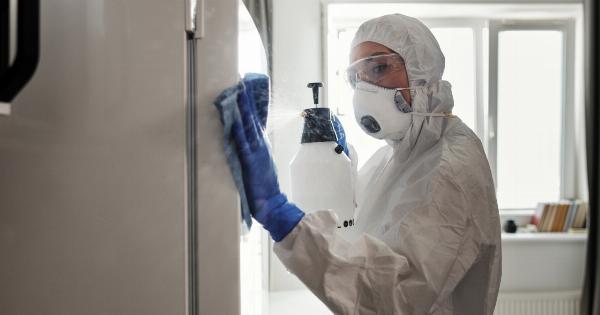Public pools are popular destinations during the summer season, offering a refreshing escape from the heat. However, amidst the splashing fun and laughter, there lurks a potential threat that often goes unnoticed – bathroom germs.
Despite the meticulous efforts of pool staff to maintain a sanitized environment, it is essential for swimmers to be aware of the risks these germs can pose and take appropriate measures to protect themselves. In this article, we will explore the importance of personal hygiene, the potential dangers of bathroom germs in public pools, and ways to prevent the spread of infections.
The Risks of Bathroom Germs
Public pools serve as a breeding ground for various types of bacteria, viruses, and fungi. While most of these microorganisms are harmless, some can cause serious health issues. One of the primary sources of these germs is bathroom-related contamination.
When swimmers use the pool after using the bathroom without practicing proper hygiene, they introduce a significant amount of germs into the water.
These germs can survive in the pool for a considerable period, increasing the risk of infection for every subsequent swimmer. Additionally, if someone with an existing infection enters the water, they contaminate the pool with their bodily fluids, potentially exposing others to harmful pathogens.
Common Types of Bathroom Germs in Public Pools
1. E. coli: This bacteria resides in the intestines of humans and animals and can cause severe gastrointestinal distress if ingested. E. coli contamination is often a result of failing to wash hands properly after using the bathroom.
2. Staphylococcus: Staphylococcus is a type of bacteria commonly found on the skin and in the nasal passages. If it enters the body through an open wound or a cut, it can cause skin infections, pneumonia, or bloodstream infections.
3. Norovirus: Norovirus is a highly contagious virus that can spread through water contaminated by infected individuals. It leads to vomiting, diarrhea, and stomach cramps.
4. Fungal Infections: Fungi such as dermatophytes and yeast can thrive in moist environments like swimming pools and locker rooms. These fungi can cause various infections, including athlete’s foot and ringworm.
Preventing Infections and Maintaining Personal Hygiene
While we cannot eliminate the presence of germs entirely in public pools, there are several precautions swimmers can take to reduce their risk of infections:.
1. Shower Before Entering the Pool
It is crucial to rinse off in a shower before entering the pool. This helps remove any sweat, oils, or loose bacteria on your body, minimizing the contamination you might introduce into the water.
2. Practice Good Hygiene
Always use the bathroom and clean yourself thoroughly before entering the pool. Ensure you wash your hands with soap and water for at least 20 seconds. Avoid spitting or urinating in the pool, as these actions can contaminate the water.
3. Stay Home When Ill
If you are experiencing diarrhea, vomiting, or any other contagious illness, it is essential to avoid swimming in public pools. Rest and allow your body to recover, and help prevent the spread of infections to others.
4. Encourage Pool Management to Implement Regular Cleaning Procedures
Pool staff should routinely sanitize and disinfect the pool area, paying extra attention to commonly touched surfaces such as door handles, railings, and lockers.
Adequate filtration and chlorination processes should be maintained to inhibit the growth of harmful bacteria and viruses.
5. Avoid Swallowing Pool Water
It’s crucial to avoid ingesting pool water as much as possible. Accidental ingestion can introduce harmful germs into your system, increasing the risk of infections.
Encourage children to stay away from drinking pool water by providing them with plenty of fresh drinking water to stay hydrated.
6. Practice Proper Pool Etiquette
Respecting others’ health and safety is equally important. If you or your child have an open wound, consider using waterproof bandages or covering it with a waterproof adhesive wrap before entering the pool.
This prevents the entry of germs and reduces the risk of contaminating the water.
By following these practices, swimmers can minimize the risk of infection and enjoy their time at public pools with greater peace of mind.
Conclusion
Public pools can be a source of immense joy and relaxation, but it is vital to remain cautious of the potential risks they pose. Bathroom germs in public pools can lead to various infections, ranging from mild discomfort to more severe illnesses.
By practicing proper personal hygiene, encouraging effective cleaning procedures, and promoting responsible pool etiquette, swimmers can play their part in creating a safer environment for all. Remember, your health matters, so take the necessary precautions to protect yourself and others from these hidden dangers.































